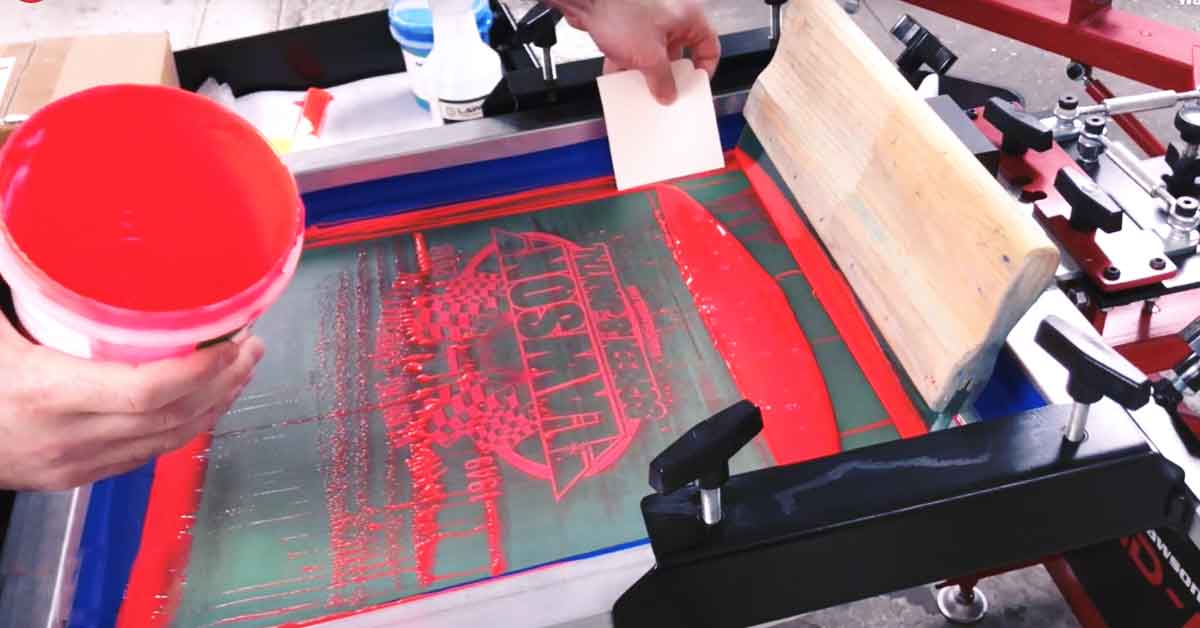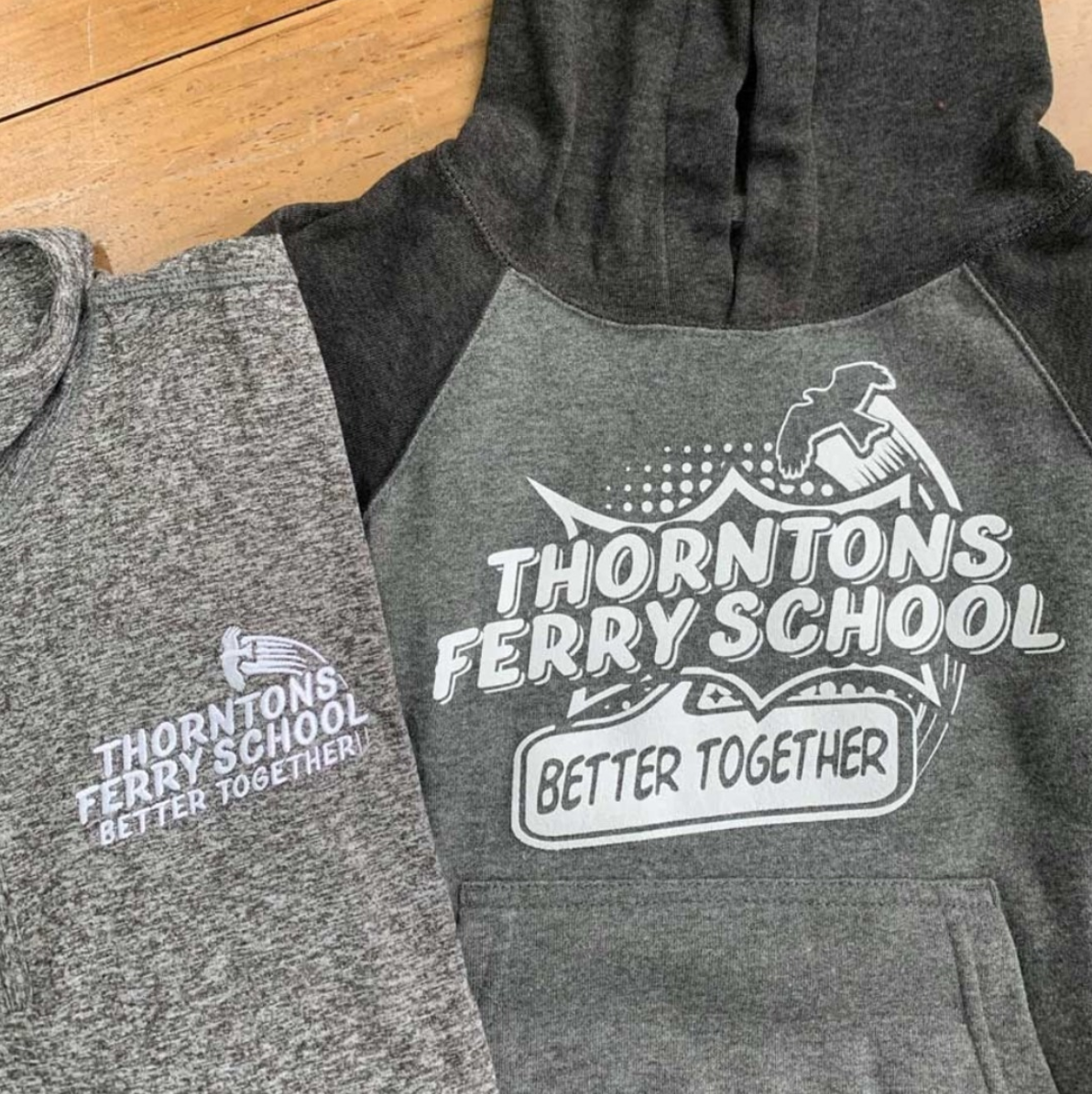Tx Tees for Beginners
Table of ContentsThe 3-Minute Rule for Tx TeesThe 3-Minute Rule for Tx TeesTx Tees Fundamentals ExplainedFascination About Tx Tees3 Simple Techniques For Tx TeesSome Known Details About Tx Tees Tx Tees - Questions
That brings your overall to roughly $1,900 gross and shipping. Include up various other expenses, like the number of utilities it takes to run the shop and the cost of ink and solution per design. custom screen printing. Take the print listed below. This is a one-color photo, so the cost of ink per shirt is roughly 20 cents.The solution must only be a few cents since you 'd only require to layer one screen for this work. How much should you bill per shirt to make a revenue? Normally, printers attempt to make up to 45% earnings on a print job. Here's a table to help you determine that: overall cost per thing percent of wanted revenue as a decimal (instance:.25 or.45) revenue made per item per job Currently allowed's discuss the success of DTF.

With DTF, you can print a handful of shirts, or simply one. Both display printing and DTF have their niches in the world.
The smart Trick of Tx Tees That Nobody is Discussing
The ideal way to recognize? Ask about and see what printing shop like yours are doing. custom screen printing. Try both out and see which you like better
When you're choosing what type of printing approach to use for printing your artwork layouts on your garments, it's important that you understand the differences between these two methods so you can optimize outcomes while minimizing expenses. Display printing is one of the most commonly made use of technique for publishing styles on fabrics.
DTG printing is additionally understood as spot or direct to garment printing because it publishes only what is required as opposed to making a screen as display printers do. https://russellcostello796.wixsite.com/txtees02. Display printing works by screen filler squeegee screen printing ink display mesh screen, then transferring the photo to garment making use of warmth and/or stress
The DTG printer uses unique dye-sublimation inks that are used right into a pre-designed image by an electronic printing system. The inks enter into the textile, enabling lively shades and remarkable information. It's also known as area or direct to garment printing because it publishes just what is needed as opposed to making a screen as screen printers do.
Indicators on Tx Tees You Should Know
It's much faster - you can print a fullcolor picture in minutes, as opposed to hours for screen printing. Second, there's no established up time or expenses entailed - you can publish any layout you like, without having to develop a display. Third, there's no waste - since display printers screen print one layout at a time, they have to evaluate each color separately.
The paper is very costly and can just be made use of as soon as. Once it's printed on, it has to be disposed of. - The preliminary purchase price is less than the in advance investment of DTG printers- You can print multi-color designs one screen at a time as opposed to needing to print each color individually like DTG printing.

The Best Guide To Tx Tees
Instead of making use of display mesh as display printers do, color sublimation printers use laser technology to move your photos onto garments or paper. A warmth procedure moves the color from its solid-state directly into the gas phase which in turn fuses it onto material substratums when they are quickly warmed to high temperature levels under high pressure.
Sublimation printing is environment-friendly. It uses much less water than screenprinting, and because it doesn't entail making use of hazardous solvents, it's safe for all types of clothing. The color sublimation inks are also unsmelling when healed, unlike display printers that make use of dangerous chemicals throughout the display printing procedure that leave an undesirable smell.
They additionally conserve cash on costly devices like exposure devices since color sublimation printers don't need a UV exposure device or a flash treatment oven that is usually used in screen printing (custom cap printing). What is straight to garment printing (DTG Printing)? DTG printing is a digital screenprinting procedure that prints straight onto textile utilizing specialized inkjet printers
Excitement About Tx Tees
DTG printing supplies lots of advantages over conventional screenprinting, including the capability to publish photo top quality pictures, better shade vibrancy, and the ability to publish designs on darker materials. DTG printers function by warming the textile ink till it turns into a gas. The gas after that penetrates the textile, bonding with the fibers to develop a long-term print.

Display printers merely prepare their screen after that start publishing up until they lack product or ink.- There is a wide variety of skilled screen printers around the world, which can be handy for novices. - It's a slower process - screen printers often need to await the ink to completely dry before they can print the next shade- Screen printers require hand-operated labor, so there's a higher knowing contour and it takes longer to generate a top notch design- Display printing isn't as precise as DTG printing, so you might obtain some "blood loss" of shades from one component of the photo onto another if not done correctly.
6 Simple Techniques For Tx Tees
However, as opposed to making use of screen mesh as screen printers do, color sublimation printers use laser modern technology to transfer your pictures onto garments or paper. A warm process moves the dye from its solid-state straight right into the gas phase which in turn integrates it onto fabric substratums when they are quickly heated to high temperatures under high stress.
Sublimation printing is environmentally friendly. It uses much less water than screenprinting, and due to the fact that it does not entail making use of hazardous solvents, it's safe for all sorts of garments. The color sublimation inks are likewise odor free when healed, unlike display printers that make use of harmful chemicals during the screen printing process that leave an unpleasant smell.
They additionally save cash on costly devices like direct exposure devices considering that color sublimation printers don't need a UV exposure device or a flash remedy stove that is commonly made use of in display printing. What is straight to garment printing (DTG Printing)? DTG printing is a digital screenprinting procedure that prints directly onto fabric making use of specialized inkjet printers.
The Basic Principles Of Tx Tees
DTG printing provides several benefits over typical screenprinting, including the ability to publish photographic top quality pictures, better color vibrancy, and the capacity to print styles on darker fabrics. DTG printers function by heating the textile ink until it develops into a gas. The gas then permeates the fabric, bonding with the fibers to produce a permanent print.